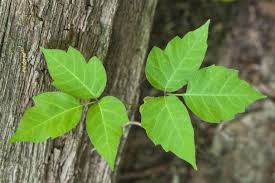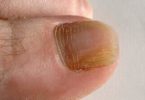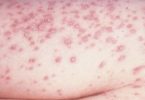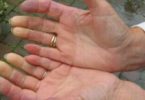What's in this article?
What is Poison ivy?
Poison ivy typically grows as a vine or shrub, and it can be found throughout much of North America (except in the desert, Alaska, and Hawaii). It grows in open fields, wooded areas, on the roadside, and along riverbanks. It can also be found in urban areas, such as parks or backyards. Poison ivy plants typically have leaf arrangements that are clustered in groups of three leaflets, though this can vary. The color and shape of the leaves may also vary depending upon the exact species, the local environment, and the time of year. The plant may have yellow or green flowers, and white to green-yellow berries, depending on the season.
Causes of Poison ivy
Most people (85 percent) develop a rash when they get urushiol on their skin. The first time you get this oil on your skin, you may not get a rash. The next time this oil gets on your skin you can become sensitive to it. Once you are sensitive to it, a rash appears. About 15 percent of people do not become sensitive to this oil and never develop a rash.
Adults who had rashes as a child often find that they are less sensitive as adults. They may completely lose their sensitivity and never get another rash when the oil touches their skin. Adults who never had a rash as a child may become sensitive to the oil.
What causes this rash?
There are 3 ways to get this rash:
- Direct contact: By touching poison ivy, poison oak, or poison sumac, you can get a rash. Every part of these plants the leaves, stems, roots, and flowers contains the oil.
- Indirect contact: Urushiol can stick to almost anything. If you touch a pet’s fur, gardening tool, or sports equipment that has the oil on it, you can get a rash. Dogs and other animals do not get this rash. Only people get this rash.
- Airborne contact: Burning these poisonous plants releases particles of urushiol into the air. These airborne particles can land on the skin.
It is not possible to get this rash from touching someone who has the rash. The skin absorbs the oil too quickly. You cannot get a rash from getting the fluid in the blisters on your skin.
Symptoms of Poison ivy
Signs and symptoms of a poison ivy rash include:
- Redness
- Itching
- Swelling
- Blisters
Difficulty breathing, if you’ve inhaled the smoke from burning poison ivy
Often the rash looks like a straight line because of the way the plant brushes against your skin. But if you come into contact with a piece of clothing or pet fur that has urushiol on it, the rash may be more spread out. You can also transfer the oil to other parts of your body with your fingers. The reaction usually develops 12 to 48 hours after exposure and lasts two to three weeks.
The severity of the rash depends on the amount of urushiol that gets on your skin. A section of skin with more urushiol on it may develop a rash sooner.
Your skin must come in direct contact with the plant’s oil to be affected. Blister fluid doesn’t spread the rash.
Preventing Rashes From Poison Plants
The best approach is to avoid getting the rash in the first place. Here are some good steps to take.
- Learn to identify poison ivy, oak, and sumac, so you can steer clear of them. (Be especially careful if the leaves look shiny.)
- Avoid areas where you know these plants live.
- Wear long sleeves and long pants when you’re in areas that could contain poison plants.
If you come into contact with urushiol oil, try to wash it off your skin right away. But don’t take a bath! If you do, the oil can get in the bath water and spread to other areas of your body. Take a shower instead, and be sure to use soap. And if your dog has been out exploring the woods, you might want to give your pet a shower, too!
Treatments for Poison ivy
Poison ivy treatments are usually limited to self-care methods. And the rash typically goes away on its own in two to three weeks.
If the rash is widespread or results in a large number of blisters, your doctor may prescribe an oral corticosteroid, such as prednisone. If a bacterial infection has developed at the rash site, your doctor may give you a prescription for an oral antibiotic.
See a Doctor
It’s a good idea to consult with your doctor if you have any kind of rash, especially if you have a fever, too. The doctor might want you to come in for an office visit.
If your rash was caused by poison ivy or a similar plant, the doctor may recommend cool showers and calamine lotion. In more severe cases, a liquid or pill medicine called an antihistamine might be needed to decrease itching and redness. A steroid (say: STER-oyd), another kind of medicine, may be prescribed in some cases. This medicine may be applied directly to the rash or taken in a pill or liquid form.






Leave a Comment